Jalapeños are a hot chili pepper popularly used in salsa, pizza, and other dishes. From Mexican to Italian recipes, from budget snack bars to expensive restaurants, its prevalence makes it a prime candidate for freezing and storage.
Jalapeño peppers can be frozen. However, doing so is contingent on the correct pre-storage quality checks, the proper approach to washing, and the suitable storage methods at ideal conditions. When adequately performed, freezing jalapeño can preserve its flavor and nutritional content for up to a year.
The initial screening step in freezing jalapeños is a critical determinant of its after-thaw results. When given the choice, always go for the quality jalapeños. This means smooth and dark green jalapeño with little to no lumps, wrinkles, and scars.
After screening for quality, jalapeños need to be thoroughly washed and dried prior to storing in the freezer. Blanching, which is a prerequisite step for freezing most fruits and vegetables, is surprisingly not necessary for jalapeños. Jalapeños contain natural preservative chemicals, and these chemicals suppress the growth of bacteria and delay the decaying process that is usually found in other fruits and vegetables.
When in the freezer, air-tight containers are key to properly storing jalapeños. Exposure to cold air may lead to moisture loss, and moisture loss ultimately leads to a deterioration in quality.
Picking the Right Jalapeños for Freezing
Jalapeño is best consumed crispy. When stored in the fridge rather than frozen, the estimated storage time period that is able to maintain its crispiness is around a week. And although freezing is an effective way of maintaining the nutritional value and spice of jalapeños, freezing alone does not ensure its prolonged crispiness.
Instead, the jalapeños’ pre-frozen quality is the primary determining factor to its after-thaw results. A poorly selected and soggy jalapeño piece will remain substandard. To properly select jalapeño, some of the attributes to examine include its color, the firmness of its wall, and the smoothness of its skin.
Color and Age of Jalapeño
Color is an indication of jalapeño maturity. Jalapeños change their colors from green to red as they ripen. For maximum shelf life, freezing green jalapeños is preferred. This is specifically true for green jalapeños characterized by firm walls and smooth skins, as opposed to wrinkled or bruised ones.
Also on the subject of age, the Scoville Heat Units (SHU) in jalapeños is between 2500 and 8000, depending on maturity. SHU is the measurement of capsaicin present and it is responsible for the spicy and hot flavor of jalapeños. (SHU is also often defined as the number of times needed to dilute capsaicin by sugar and water mixture.)
The presence of capsaicin increases as jalapeños mature and ripen. Capsaicin is a compound that is responsible for the spicy and hot flavor of peppers, so it is a major determinant of the quality of jalapeños. Fortunately, the level of heat of jalapeños remains the same even when frozen.
Jalapeño Skin Irregularities
Ripe and red jalapeños will have striations, streaks, or corking. These are visible on red jalapeños due to their quick growth from excess water and sunlight. The sudden and rapid growth causes the walls and skin of jalapeños to stretch and crack, making them poor candidates for freezing and often susceptible to freezer burn.
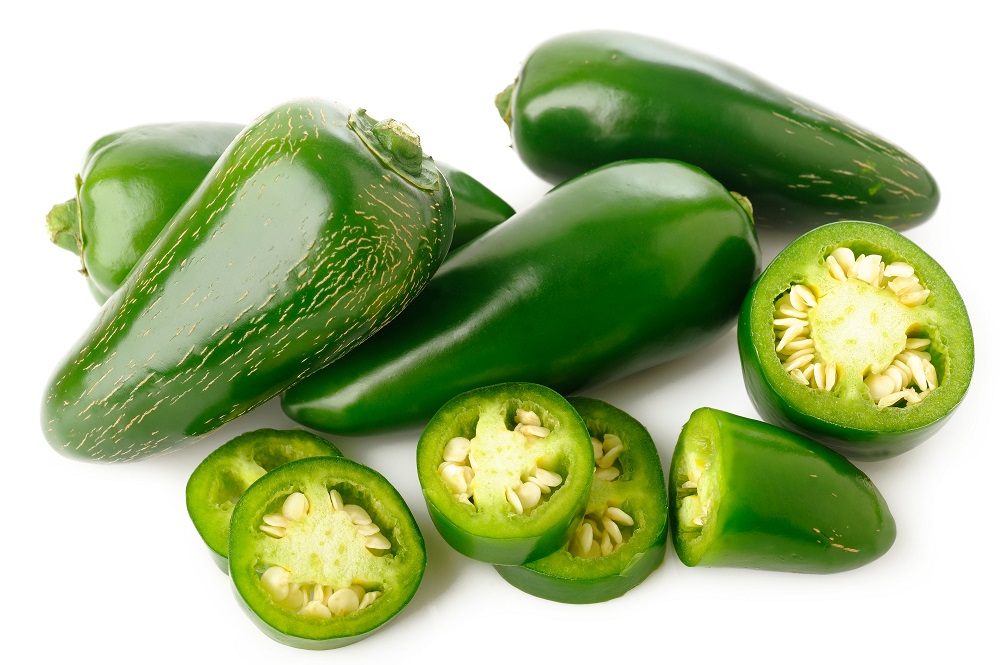
Washing Jalapeños
Washing jalapeños with plain water is sufficient and recommended.
Most fruits and vegetables require water with salt to kill or remove germs and bacteria. In contrast, jalapeños have natural preservation chemicals such as citric acid, making plain water sufficient.
Soaking jalapeños in salt-added water also risks lessening its spice. So not only is plain water sufficient, but it also is the recommended option.
When washing is done, ensure the jalapeños are completely dried prior to freezing, as the excess external moisture — not to be confused with the natural water content of jalapeños — may cause freezer burn.
Citric Acid in Jalapeños
Citric acid is commonly used as a preservative that prolongs the life of a product, making jalapeños one of the few fruits and vegetables resistant to germs and bacteria.
Jalapeños have a pH level of 4 to 6, making them acidic with a decent amount of citric acid. Citric acid is a weak organic acid that has the ability to pass through bacteria membranes. Citric acid then alters the composition of bacteria by lowering the bacteria’s pH level. In turn, the lowered pH level of bacteria causes destruction to the DNA cells and protein, and eventually the death of the bacteria.
Is Blanching Necessary?
Due to the jalapeños’ high resistance to bacteria, blanching is a step that is often skipped.
Blanching, or the process of submerging produce in extreme heat for a short amount of time, followed by quickly immersing in ice-cold water, is common practice for a lot of fruits and vegetables. But the blanching process is mainly for killing enzyme activity and bacteria, which may be unnecessary to the bacteria-resistant jalapeños.
Also, keep in mind that submerging jalapeño in water may result in soft and soggy produce that is unsuitable to freezing anyway.
Freezing Jalapeños
Airtight containers or zip locks are recommended for the proper freezing of jalapeños. The seals prevent moisture loss and deterioration in quality.
There is a strong correlation between the presence of excessive striations and the potential for freezing injury — or the damage that occurs to fruits and vegetables at temperatures below freezing point.
Freezer Burn
As the walls of jalapeños mature thinner, they become vulnerable to moisture loss. The soft and weak skin allows air to penetrate, leading to eventual dehydration and oxidation — the change in chemical substances due to the addition of oxygen. Dehydration and oxidation ultimately lead to freezer burn.
Flash Freezing (Optional)
Flash freezing, or the quick freezing under cryogenic temperatures, is an option that is available in some commercial establishments. If this is an alternative that is available to you, ensure the jalapeños are laid separately on a flat sheet as this prevents them from sticking to each other.
Thawing Frozen Jalapeño
Thawing may or may not be necessary, depending on the expected use of jalapeños. For example, if the jalapeño is a raw ingredient for cooking, then thawing may not be important.
That said, the American Food and Drug Administration (FDA) recommends “slacking” of frozen goods prior to consumption.
As highlighted by the FDA in the FDA Food Code 2017*, “slacking (is) the process of moderating the temperature of food such as allowing (it) to gradually increase from (the) temperature of -23°C (-10°F) to -4°C (25°F) in preparation… of previously block-frozen food.” In the case of jalapeños, this means transferring them to a fridge prior to thawing, slowing down the condensation process.
When the jalapenos are subsequently taken out of the fridge to thaw at room temperature, using paper towels to absorb the melting ice is recommended. Having them thaw on a non-absorbent surface risks oversoaking.
Chopped or Sliced jalapeño vs the Whole jalapeño
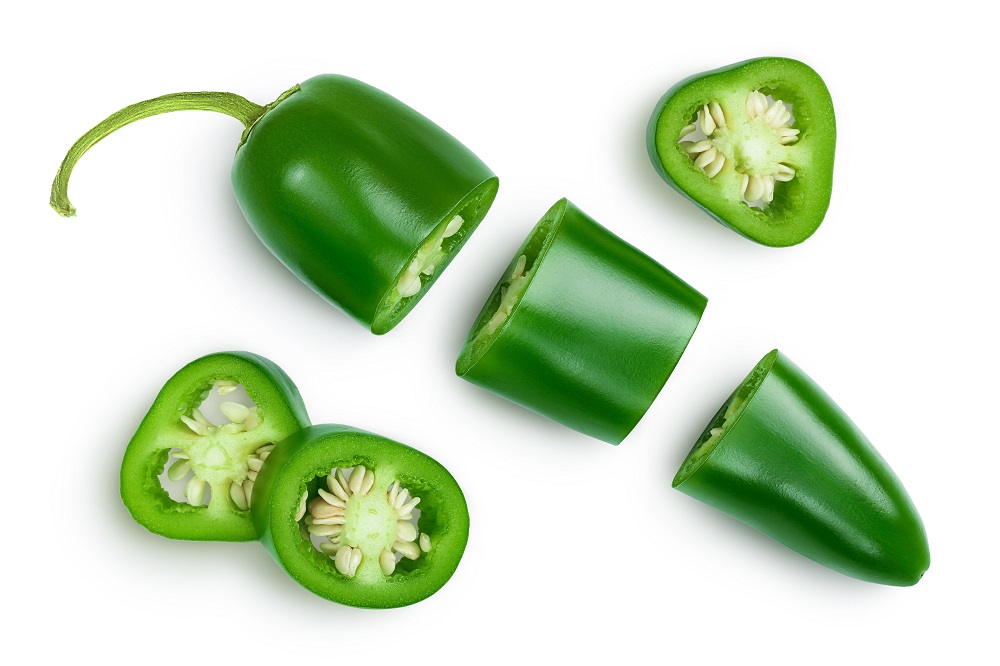
Chopping or slicing jalapeño is not necessary for proper freezing. Unlike in larger fruits and vegetables where the surface-to-volume ratio may have an impact, the benefits of chopping or slicing should be minimal. While mature jalapeños are relatively large pods at around 2 to 3 inches (approximately 5 to 7.6 cm), they are still small enough to freeze whole. Nonetheless, there are advantages to chopping or slicing jalapeños prior to freezing.
Instead of the improved quality and storage value, the benefits of chopping or slicing jalapeños are especially found in the practical applications to the kitchen. Chopping or slicing ensures you only utilize what is necessary per recipe, with the rest of the unused bits stored for future use.
Placing sliced or chopped jalapeños in a plastic bag is helpful, but beware of sticking pieces. If this is the only option, ensure each bag contains what you will need per recipe or use. Assuming sticking pieces are the issue, also consider storing them on a tray with the jalapeños lined individually.
References
- *See page 21 of the FDA Food Code 2017

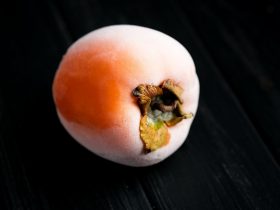
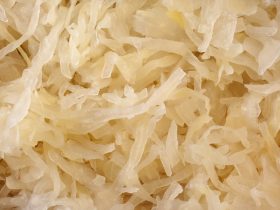
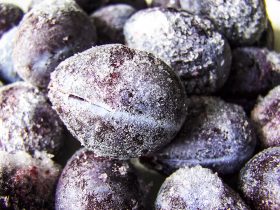
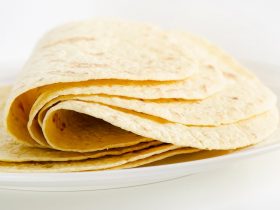
Hi, I'm Dom
Dom Eats was started to help other people fall in love with food. While cooking can feel intimidating, it doesn't have to be.